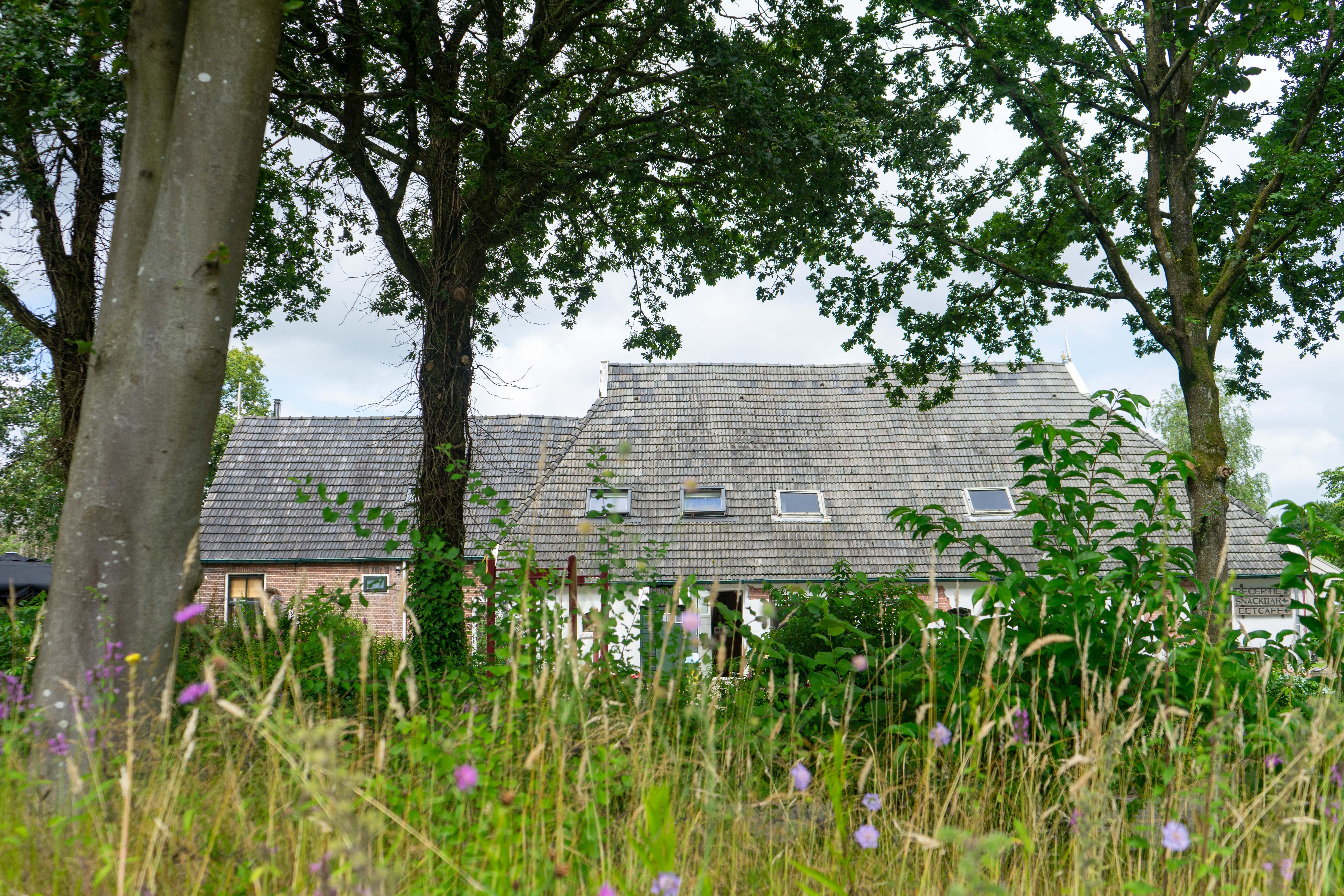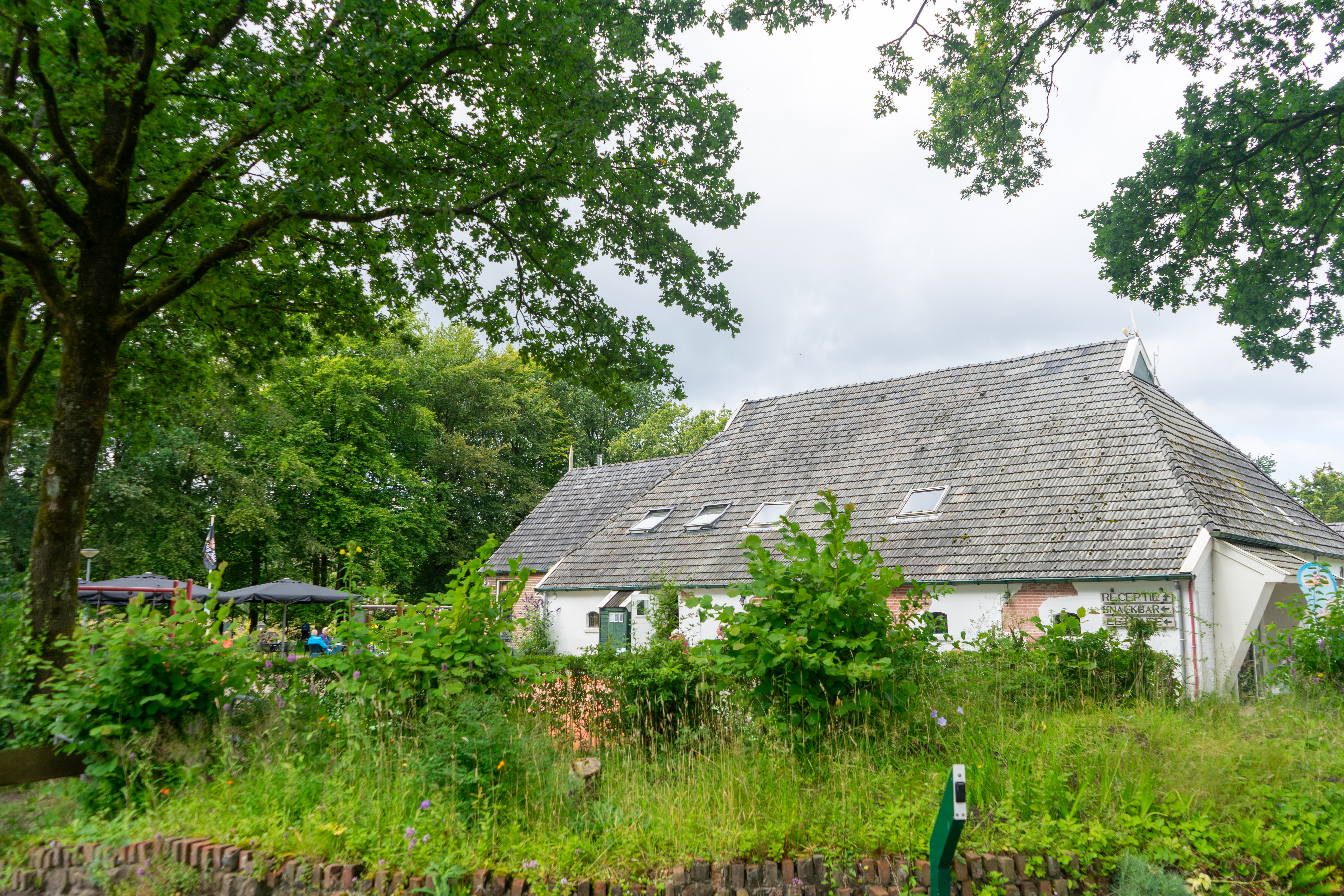In the 1930s, during the Great Depression, the Dutch government set up national labour camps as part of work supply projects, an initiative to get unemployed men into work. These unemployed men were not necessarily placed under duress, but participation was often the only way to receive benefits. The government offered them work in clearing forests, moors and other hard physical labour, meant to help them out of unemployment while developing the land.
A large number of these government work camps were situated in Drenthe. These included the camps Diever A and Diever B in Oude Willem. The camp consisted of wooden living barracks, with a grass field in the middle, the cook's house, the kitchen, the laundry room, a pump house and a canteen. It was under the direction of the National Office for Work Expansion, and supervision of the work was carried out by the Nederlandsche Heidemaatschappij. On 15 September 1938, the first unemployed men from the Randstad came to work camp Diever A. It accommodated about 100 men and was soon not big enough. In November 1938, therefore, a dozen metres away, a complete camp was added, Diever B, which could accommodate another 100 unemployed men.
With the German occupation of the Netherlands in May 1940, the management of the camps gradually fell into the hands of the German occupiers and their Dutch collaborators, such as the State Police and later the Sicherheitsdienst (SD). In November 1941, the camps were cleared, and unemployed men from the Randstad were sent to Germany to work in the Third Reich's war industry.
This evacuation of the camps made them available for a new, sinister function: housing Jewish men who had become unemployed due to anti-Jewish measures. From January 1942, these camps were then used to isolate Jewish forced labourers and employ them in hard labour, such as land clearing and other physical tasks deemed necessary by the occupying forces. To make room for more Jewish men, groups of Jewish forced labourers were regularly lifted from their beds in the dead of night to be evacuated on foot to the Westerbork transit camp 30 kilometres away. Until the night of 2 to 3 October 1942, on Yom Kippur, a raid took place and all the Jewish forced labourers present were taken away to Westerbork. From there, they were deported to extermination camps in Germany and Poland. Only a few survived the war.
After the raid on 2 October, the camp came into the hands of the Dutch Labour Service. In 1944, the camp served as a government evacuation camp for women and children from The Hague and Scheveningen, who had to make way for the construction of the Atlantic Wall. After the war, the camp became an internment camp for NSB members.
In late 1946, the camp was demolished and the wooden buildings were rebuilt in Montfort, Limburg. It was used there as a labour camp for the reconstruction of the Ruhr region and later as a holiday camp for children physically affected in the war. Still later, it became a customs school and served for the reception and housing of Ambonese, until the camps were permanently demolished in 1966.
In Oude Willem, near Diever, two of the original camp buildings remain intact. For instance, the old pump house, visible from the road, is now a residential house. The former canteen is now the garage and work shed of the campsite that is located there today.
Work camps Diever A and Diever B
Bosweg
8439 SN
Oude Willem
Contact details












